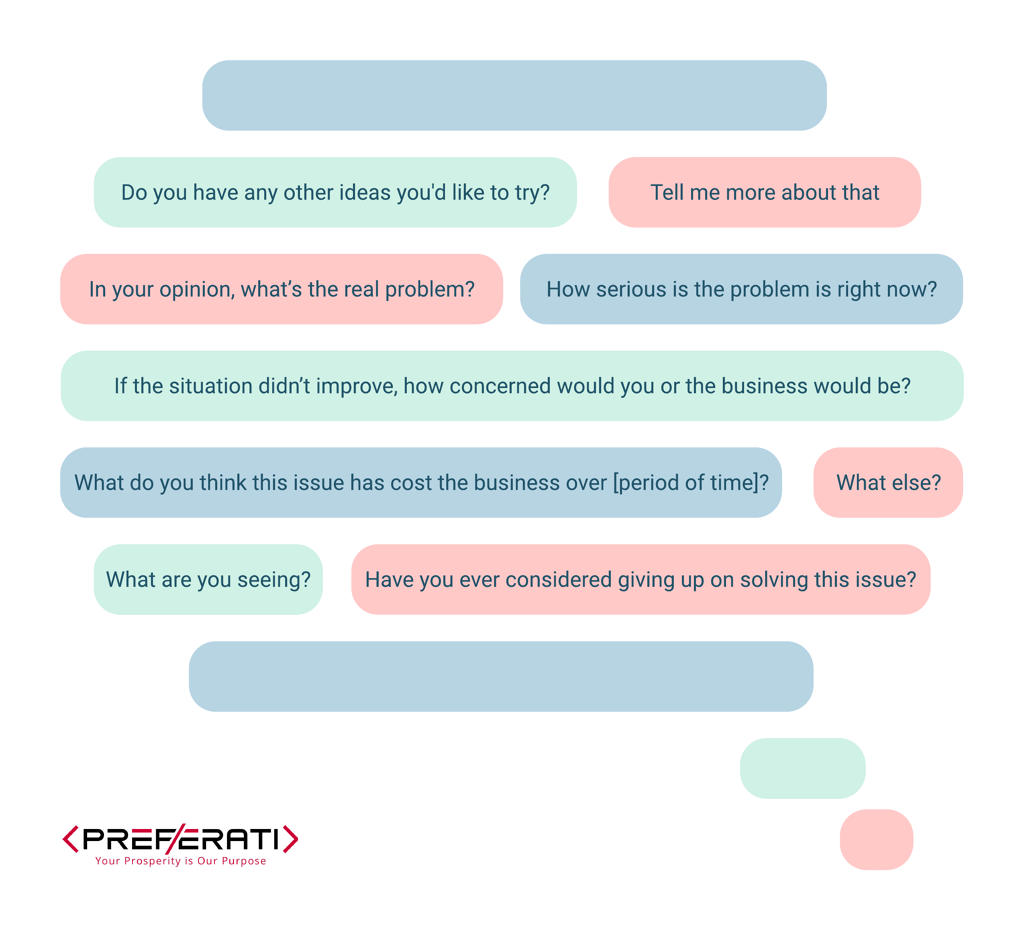David Sandler said “the problem the patient brings to their therapist is never the real problem.” They may say “I’m not sleeping well” or “I’m fighting with my wife” – but that’s not the real problem, not the root cause. It’s the therapist’s job to dig deeper until they get to the bottom of what is really going on.
Similarly, the problems your clients, customers, sales prospects, or coworkers bring you are probably not the whole story. This is true with your coworker’s challenge, your customer’s request, or your sales prospects asking for a proposal. So why do people not come to you with completely thought-out questions and problems? They aren’t trying to make things difficult for you. In reality, they simply don’t have the time or perspective to sit down and fully focus or articulate the problem.
So you need to learn more before you can draw any conclusions or take any action. If you were to take action on their first complaint, you will waste your resources and not solve the root of the issue. Instead, you have to get good at asking strategic questions.
Let’s think of this in terms of Wikipedia.
A Wikipedia article on a topic has lots of links to related information. You can click on a link and dig deeper to learn more about the topic that was referenced in the article.

Similarly, when you are talking to someone, you can ask questions and dig deeper on specific things they mention. By digging deeper, you are building your understanding and mental picture of what is really going on. As you dig, you are going to summarize your understanding and repeat it back to the person you are talking for verification. This is a critical step and with time it becomes an automatic habit.
When I receive a new email or ticket, I read it and ask myself the following questions:
- Do I really understand what is going on here?
- Do I really understand the background behind all of this?
- Do I understand all the options?
This is extremely important for cross-cultural teams because there is a much larger potential to misunderstand. It takes a lot of practice to get good at asking strategic questions and it will be different over email or in person.
To make it easier, you can begin by asking the questions below. Click here to download a copy for on the go.

Many of us come from households or cultures that discourage asking a lot of questions.
You might be thinking “will they think I’m being dodgy because I’m asking lots of questions?” or “my parents taught me to mind my own business and not ask intrusive questions”.
It’s not dodgy or intrusive if you are sincerely trying to answer their actual problem and provide the most useful solution. However if you go way off topic or sound like a kid saying “why, why, why,” that’s not helpful.
I encourage you to roleplay this with your team to start practicing this skill. Start by asking a team member “What’s something you want to get done or resolve, and haven’t yet? It needs to bother you, but also not so personal that you aren’t willing to talk about it completely”. It can be a client email, but it’s better if it is something going on with them directly since the process will be authentic. Then as they tell you the situation, ask them questions to help you understand the root of their problem until you can provide a solution or next action.
